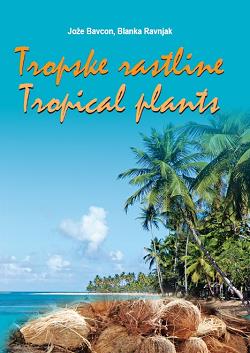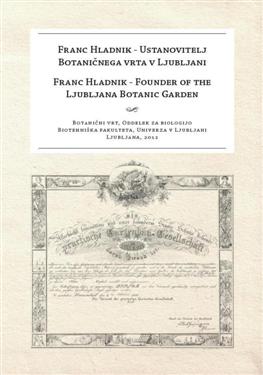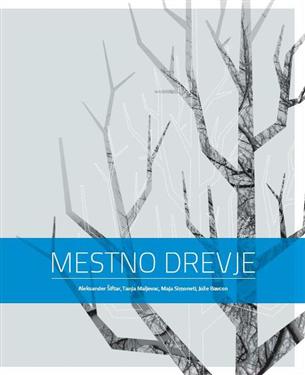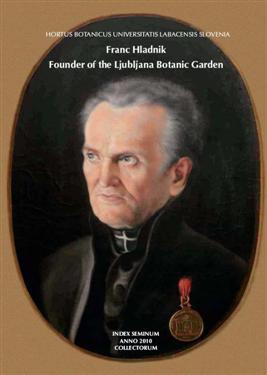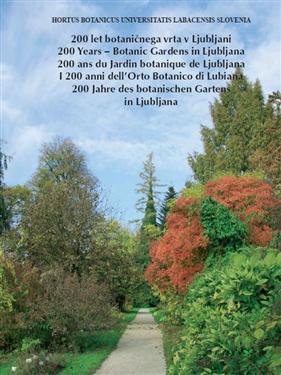Order via email!
Pay to the following bank account - view image!
BOOK
NEW BOOK!
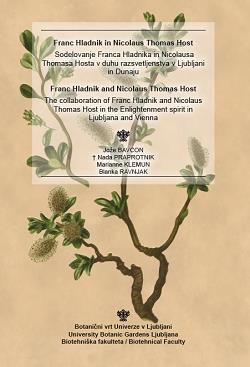
FRANC HLADNIK AND NICOLAUS THOMAS HOST
The book contains the first translation of Nikolaus Thomas Host's letters to Franc Hladnik into Slovenian and English, thus making a significant contribution to the depiction of the Enlightenment period and the connection between Ljubljana, Klagenfurt and Vienna. All original letters are also reprinted, so that they can also be read in German for those who have a good enough command of the manuscripts.
Text in Slovenian and English
ISBN: 978-961-7215-10-6
Price: 28 €
Read more...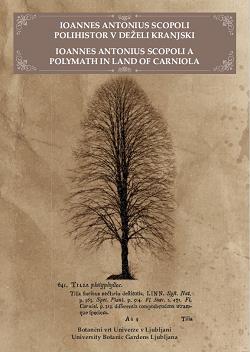
IOANNES ANTONIUS SCOPOLI A POLYMATH IN LAND OF CARNIOLA
Text in Slovenian and English
ISBN: 978-961-6822-96-1
Price: 38 €
Read more...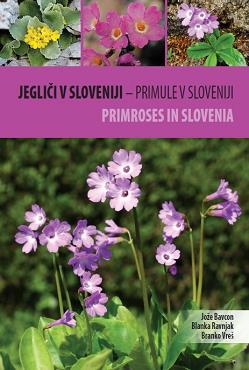
PRIMROSES IN SLOVENIA
From Assoc. Prof Dr Andreja Urbanek Krajnc recenzion:
The authors precisely specify the variants within individual species with a description of morphological features that are the result of their own field experience. The colour variants of the common primrose are listed in detail as possible clinal versus genetic variations, from almost completely white, which are characteristic of the Mediterranean region, to various shades of yellow, which are characteristic of the interior of Slovenia. They provide scientific studies that explain these colour variations. They also list colour variations of other species in more detail, supported by historical sources of their descriptions.
Text in Slovenian and English
ISBN: 978-961-6822-83-1
Price: 29 €
Read more...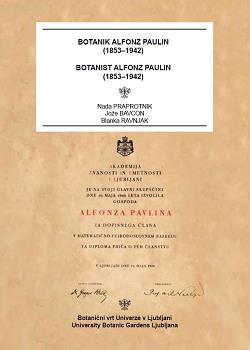
BOTANIST ALFONZ PAULIN (1853-1942)
Text in Slovenian and English
ISBN: 978-961-6822-81-7
Price: 25 €
Read more...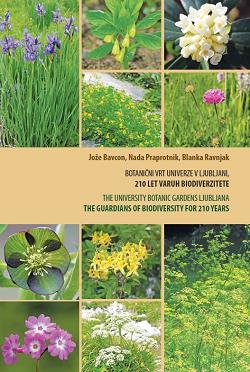
THE UNIVERSITY BOTANIC GARDENS LJUBLJANA THE GUARDIANS OF BIODIVERSITY FOR 210 YEARS
It seems that the University Botanic Gardens Ljubljana has always operated according to the guidelines of modern gardens. Some plants from different localities have been in the garden for 210 years. Even more, in some of the localities where they grew then, they are no more today. In the garden, however, they have been preserved from those days. This is important due to the possible reintroduction of former habitats. Such an example of re-introduction is the settlement of Fleischmann's parsnip species in the castle yard - that is, in Ljubljana Castle, where the plant once grew. The University Botanic Gardens Ljubljana has been the guardian of domestic flora for 210 years. In the book, we learn about the protection of different species throughout history and where all the plants from Ljubljana traveled across Europe. In addition, the book also shows the conservation efforts of garden managers and today's work in the field of plant species protection.
Text in Slovenian and English
ISBN: 978-961-6822-76-3
Price: 25 €
Read more...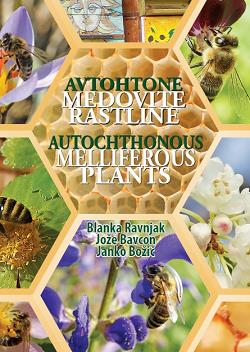
AUTOCHTHONOUS MELLIFEROUS PLANTS
Today, people often think they are self-suffi cient and can survive without nature. But that is not true. In nature, we find raw materials that we eat, use to build cities, use for clothing, curing diseases and more. Human life depends on nature and its organisms, and only in coexistence with them will human civilisation survive. Loss of habitat, fragmentation and degradation of the environment (Ouborg et al. 1991, Franklin 1980, Charlesworth & Charlesworth 1987, Barrett & Kohn 1991, Cane 2001 Laurance 2010, Bennet & Saunders 2010, Kosi 2013), excessive exploitation of environmental resources, invasive species, environmental pollution, intensive agriculture, expansion of urban areas, and subsequent climate change are the main factors causing a decrease of plant biodiversity throughout the world (Corlett 2016, APA 2019). The decrease in plant diversity also results in a decrease in animal diversity, as plants either form habitats for them or are their food. A decrease of plant diversity particularly affects pollinators, as pollen and nectar represent their food. Different groups of pollinators (bees, butterfl ies, beetles, flies, etc.) and even individual species within groups can be specialised for feeding on a particular plant species or family (Kearns & Inouye 1997, Armbruster 2016). The absence of an individual plant species can therefore cause the absence of a specific pollinator. The decrease of species diversity subsequently also affects people, because as many as 800 species (including sorts) of cultivated plants are pollinated by animals (Nicholls & Altieri 2013, ELO, EISA & ECP 2013). If there is no natural habitat in the vicinity of monoculture plantations, the density and species diversity of pollinators is lower. Plants in large monoculture plantations bloom for a specific time, thereby providing food for a limited time only. With the absence of natural pollinators, plants subsequently do not produce fruit or seed, thereby reducing the yield per hectare. For example, in certain parts of China, apple and pear tree flowers need to be pollinated by hand due to the reduction of diversity and the number of wild bees. Wild bees have disappeared because of intensive use of pesticides and the degradation of their natural habitats. Hand pollination is very demanding, time-consuming and expensive (Goulson 2012). Furthermore, for successful pollination of orchards by natural pollinators, it is also important to grow plant species under or near trees, which will provide food and home for pollinators outside the blooming season of fruit trees. They found that the quantity of fruit increased signifi cantly when more or less natural habitats of pollinators were left in the vicinity of orchards and under the fruit trees (Sheffield et al. 2016).
Text in Slovenian and English
ISBN: 978-961-6822-69-5
Price: 28 €
Read more...
TROPICAL PLANTS
The Garden of Paradise is humanity’s dream, already written in the Bible and other sacred books. Almost all religions throughout the world know the harmony of humans and nature. As humans encroach on nature, this harmony is destroyed and a primal force arises in its place. What happened to people that we can no longer achieve this harmony?
Text in Slovenian and English
ISBN: 978-961-6822-63-3
Price: 30 €
Read more...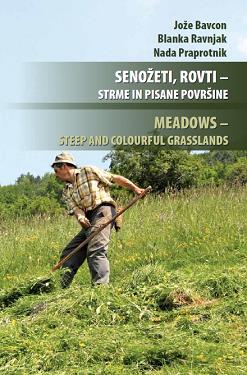
MEADOWS - STEEP AND COLOURFUL GRASSLANDS
The meadows, once indispensable colourful treasures of the landscape and crucial goods of the peasant man, are now quite at risk. Excessively early mowing, ensilage and hay baling impoverish plant species diversity. Traditional knowledge which enabled the sustainable use of space and was the primary link that connected man to nature is also being lost. Although traditional meadow mowing was a heavy job and demanded a lot of time, it was better nature conservation than today's highly mechanized mowing. Each phase of work required skills, good knowledge and understanding of the environment. At the same time, specific tools have been developed. All this together led to a successful work Mowing was at the same time a social event where people interconnected intergenerational and from the nearby and distant surroundings. They helped each other, exchanged experiences and have a good time after the work was finished. On tasks like mowing, people connected with each other and with the nature that was giving them home and food. The meadows in Slovenia were created and remained precisely because of human land development.
Text in Slovenian and English
ISBN: 978-961-6822-59-6
Price: 28 €
Read more...>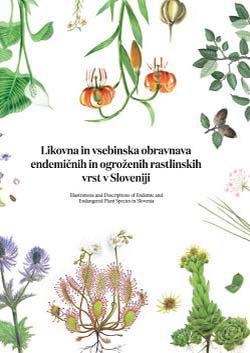
ILLUSTRATIONS AND DESCRIPTIONS OF ENDEMIC AND ENDANGERED PLANT SPECIES IN SLOVENIA
Text in Slovenian and English
ISBN: 978-961-6822-56-5
Price: 15 € 8,5 €
Read more...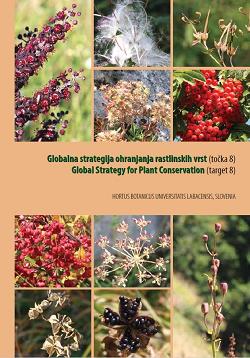
UNIVERSITY BOTANIC GARDENS LJUBLJANA AND GSPC (TARGET 8)
The Botanic garden in Ljubljana exchanges seeds of plants on the basis of written sources with other gardens from the very beginnings of its activity in 1810. The first printed list of seeds was given in 1889. Since then, this exchange has been documented. Since 1994, the University Botanic Gardens Ljubljana lists the seeds collected in the wild in the list of seeds regularly in a separate section. In the seed bank in a dry place is located about 3000 different plant species with over 12000 bags. In the permanent seed bank, we already store 702 species, which is 20,3 % of the flora of Slovenia.
Text in Slovenian and English
ISBN: 978-961-6822-54-1
Price: 15 €
Read more...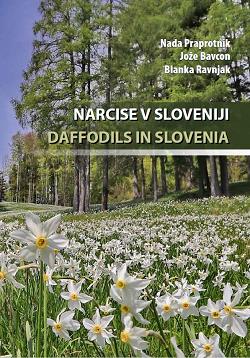
DAFFODILS IN SLOVENIA
“In recent years, I have made it a habit to visit on the Feast of Corpus Christi ... Despite the nice, warm weather of early summer, it seemed as fresh snow had fallen, as the green slopes looked as if covered by sugar ... Multitudes of white daffodils covered all the mountain meadows, daffodils so beautiful and so abundant that I have never, no where, seen a flower be as predominant to such an extent. Daffodils as far as the eye could see, daffodils everywhere ... I was climbing a true-to-life daffodil mountain. I walked through the white daffodil gardens to the top of Golica every Feast of Corpus Christi, year after year, as if on a pilgrimage to the altar of flowers. Filled with pious memories, I listened and gazed on the land of my fathers.”
Julius Kugy: The Life of a Mountaineer (1968)
Poet’s daffodil (Narcissus poeticus L. subsp. radiiflorus (Salisb.) Baker) is also known by other names: poet’s narcissus, nargis, pheasant’s eye and others. Academic Dr Milko Matičetov (1979) found around 120 local names for it. But daffodils do not grow only in Karavanks. They are just best known in Karavanks because of their abundance. They can be found in Karst, Slovenian Istria, Kočevsko, Prekmurje and other places. They are certainly most abundant in Karavanks above Jesenice, but they grow in other locations on grassy surfaces, pastures and meadows. With smaller density of populations, they are more accessible, as we can walk up to almost any flower, look and it, and compare the intraspecies diversity. On Golica and surrounding areas, this is often too difficult, as there are so many daffodils that you can not even walk among them. So we can only watch these countless populations from their edges, where the green is encroaching on them, and where we can still walk without trampling their precious white flowers.
The genus of daffodils is relatively large and includes about 26 species, while some authors list even more species – over 60. The taxonomy of daffodils is relatively complex due to the large number of garden varieties, natural hybrids and many years of cultivation resulting in numerous new combinations. Nevertheless, this is a genus with a typical Mediterranean distribution. Even though there are relatively few species in this particular genus compared to some other plant genera, it is the genus Narcissus that has a remarkable diversity in the species potential. However, in this relatively low number of species, gardeners and breeders found numerous cultivars, and then cultivated thousands more. Daffodils are one of the oldest and most beautiful spring bulbous plants, and one of the most prized garden plants for centuries.
Over 25,000 cultivars have been used in horticulture for several centuries. There are many common names for daffodils in Slovenia and throughout the world.
Text in Slovenian and English
ISBN: 978-961-6822-53-4
Price: 28 €
Read more...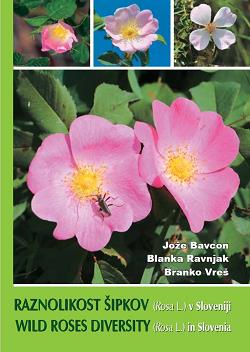
WILD ROSES DIVERSITY (ROSA L.) IN SLOVENIA
The wild rose genus is very large and includes around 200 species, which grow in temperate and subtropical areas of the northern hemisphere to tropical Asia. Only one species also grows in tropical Africa. Wild roses are predominantly deciduous and rarely evergreen shrubs, they can be climbers and are more or less thorny. Only a bit over a tenth of them grow in Slovenia, but despite that, identifying and determining them is no easier. In fact, it might be even more difficult, because Slovenia is actually a windy country, where the influences of the Alps, the Adriatic Sea (the Mediterranean), the Pannonic Plain and the Dinaric Mountains, extending along the Balkan Peninsula, are joined. There is a great interspecies diversity in various genera that are widespread in Slovenia, and it is even more pronounced with wild roses. On a very small area of 20,256 km2, there are around 3,500 different plant species, which puts Slovenia among floristically very rich areas. Some even call it the hotspot of Europe. Wild roses and their intraspecies and interspecies diversity definitely belong at the very top of diversity. They are present in every phytogeographic area of Slovenia, which further contributes to their diversity.
Text in Slovenian and English
ISBN: 978-961-6822-52-7
Price: 24 €
Read more...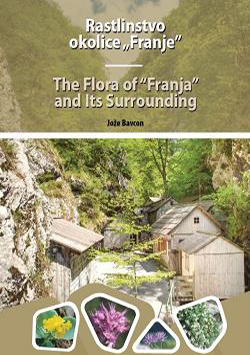
THE FLORA OF "FRANJA" AND ITS SURROUNDING
Text in Slovenian and English
ISBN: 978-961-6822-49-7
Price: 20 €
Read more...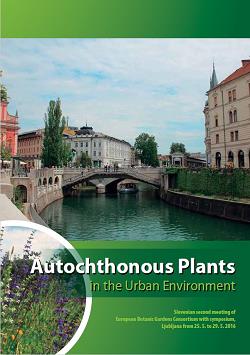
AUTOCHTHONOUS PLANTS IN THE URBAN ENVIRONMENT / SLOVENIAN SECOND MEETING OF EUROPEAN BOTANIC GARDENS CONSORTIUM WITH SYMPOSIUM, LJUBLJANA FROM 25.5. TO 29.5.2016
Text in English
ISBN: 978-961-6822-46-6
Price: 15 €
Read more...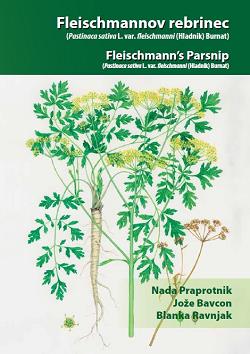
FLEISCHMANN'S PARSNIP (PASTINACA SATIVA L. VAR. FLEISCHMANNI (HLADNIK) BURNAT)
Text in Slovenian and English
ISBN: 978-961-6822-44-2
Price: 22 €
Read more...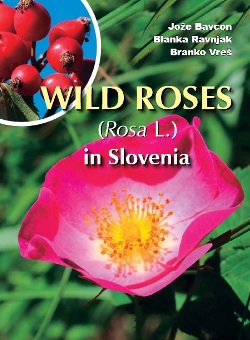
WILD ROSES (ROSA L.) IN SLOVENIA
Text in English only
ISBN: 978-961-6822-43-5
Price: 18 €
Read more...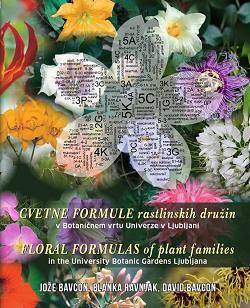
FLORAL FORMULAS OF PLANT FAMILIES IN THE UNIVERSITY BOTANIC GARDENS LJUBLJANA
Text in Slovenian and English
ISBN: 978-961-6822-40-4
Price: 34 €
Read more...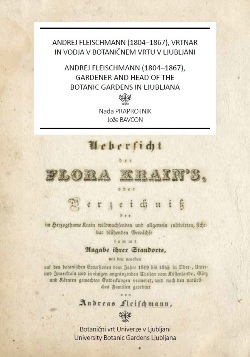
ANDREJ FLEISCHMANN (1804-1867), GARDENER AND HEAD OF THE BOTANIC GARDENS IN LJUBLJANA
Text in Slovenian and English
ISBN: 978-961-6822-39-8
Price: 22 €
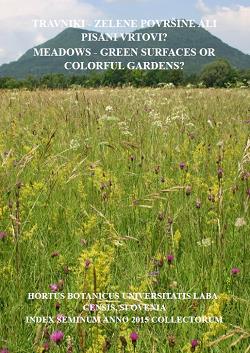
MEADOWS - GREEN SURFACES OR COLORFUL GARDENS?
Text in Slovenian and English
ISBN: 978-961-6822-37-4 (pdf)
Price: 11 €
SOLD OUT!
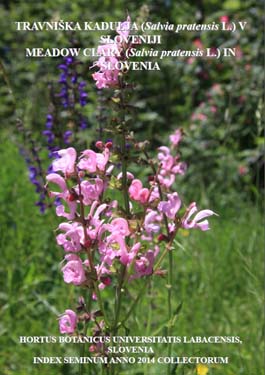
MEADOW CLARY (Salvia pratensis L.) IN SLOVENIA
Text in Slovenian and English
ISBN: 978-961-6822-26-8 (pdf)
Price: 8 €
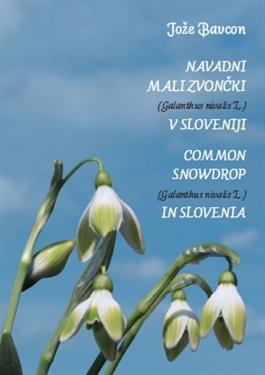
COMMON SNOWDROP (GALANTHUS NIVALIS L.) IN SLOVENIA
Text in Slovenian and English
ISBN: 978-961-6822-24-4
Price: 25 €
When snowdrops bloom, we feel the spring. Oftentimes, real spring is still far away. Snow might still fall, covering the ground for a day, a week, or more, however, snowdrops are already heralding the end of winter. Snowdrops are not plants striving to be modern. They are simply among the first, and thus do not need to compete with others. Nevertheless, one might think plenty of people get tired of them, and a fervent »fashion designer« might try coming up with something new. There is no need, however, as snowdrops take care of everything themselves.
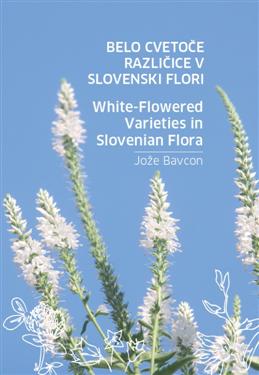
WHITE-FLOWERED VARIETIES IN SLOVENIAN FLORA
Text in Slovenian and English
ISBN 978-961-6822-23-7
Price: 25 €
The work deals with the occurrence of white-flowered varieties whose flower colour differs from the usual flower colour of the original species. The colour white, however, appears in a variety of shades. In some plants only the petals are white, though even these can be faintly creamcoloured,
in others the stamens or stigmas are different colour, with some flowers perfectly white. The present work covers the representatives of different species and genera such as I found over decades of fieldwork in various parts of Slovenia.
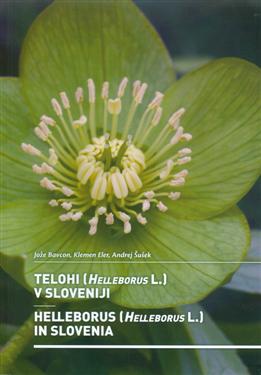
HELLEBORUS (HELLEBORUS L.) IN SLOVENIA
Text in Slovenian and English
ISBN: 978-961-6822-15-2
Price: 25 € 19 €
The present work brings together some aspects of what its authors were engaged in different periods of time and for different purposes. Although the genus Helleborus with no more than five species in Slovenia may seem straightforward enough, the actual situation is all but simple. Nature is never short of surprises and exceptions that have nothing to do with our simplified shemes and neat classifications. This is particularly true of hellebores as evolutionarily young species. In addition to presenting interesting aspects of hellebore biology, the text endeavours to embrace the widest selection of works by botanists, horticulturalists and other experts on this genus that worked in this part of the world in the past. The territory of Slovenia is often referred to already in the first detailed publications on hellebores and continues to be mentioned in numerous works ever since.
FRANC HLADNIK - FOUNDER OF THE LJUBLJANA BOTANIC GARDEN
Text in Slovenian and English
ISBN: 978-961-6822-13-8
Price: 23 €
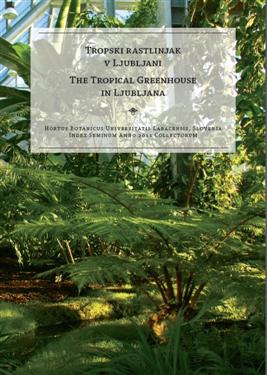
THE TROPICAL GREENHOUSE IN LJUBLJANA
Text in Slovenian and English
ISBN: 978-961-6822-14-5
Price: 19 € 10 €

SREDOZEMSKE IN TROPSKE RASTLINE
Text in Slovenian only
ISBN: 978-961-203-315-6
Price: 9 €
SOLD OUT!
FRANC HLADNIK FOUNDER OF THE LJUBLJANA BOTANIC GARDEN
text in English
ISBN: 978-961-6822-07-7
Price: 19 € 10 €
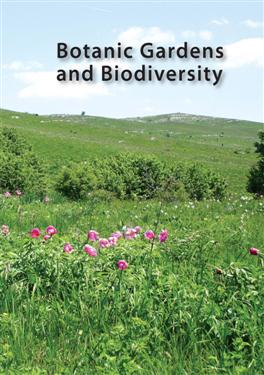
BOTANIC GARDENS AND BIODIVERSITY
text in English
ISBN: 978-961-6822-06-0
Price: 15 € 10 €
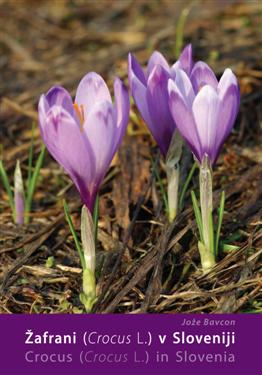
CROCUS (CROCUS L.) IN SLOVENIA
text in Slovenian and English
ISBN: 978-961-6822-04-6
Price: 19 € 12 €
200 YEARS - BOTANIC GARDENS IN LJUBLJANA
text in Slovenian, English, French, German, Italian
ISBN: 978-961-6822-02-2
Price: 19 € 12 €
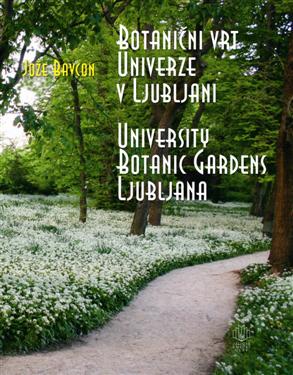
UNIVERSITY BOTANIC GARDENS LJUBLJANA
text in Slovenian and English
ISBN: 978-961-203-367-5
Price: 34 € 20 €
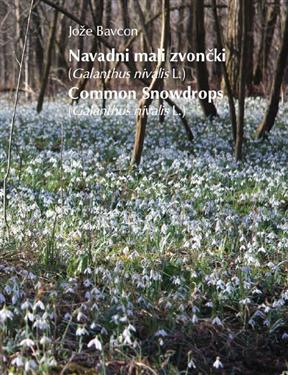
COMMON SNOWDROPS (Galanthus nivalis L.)
text in Slovenian and English
Price: 5 €
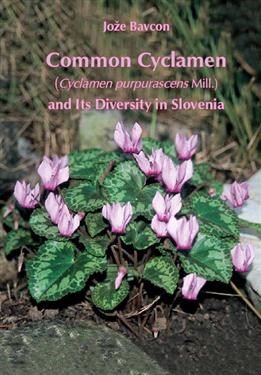
Jože Bavcon: Common Cyclamen (Cyclamen purpurascens Mill.) and Its Diversity in Slovenia
text in English
ISBN: 978-961-90262-8-1
Price: 18 € 15 €

Jože Bavcon: Common Snowdrop (Galanthus nivalis L.) and Its Diversity in Slovenia
text in Slovenian and English
ISBN: 978-961-90262-5-0
Price: 12 € 8 €
2. Reprint with amendments 2012
Different Galanthus forms on sale
Exhibition of different Galanthus forms





